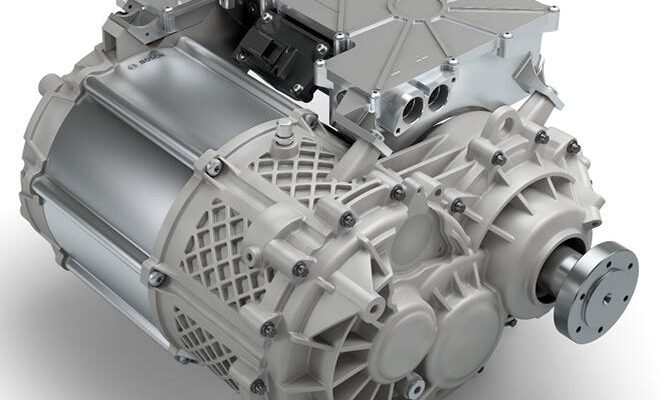The automotive e-axle is a pivotal component in electric vehicles (EVs), integrating the electric motor, transmission, and power electronics into a single unit. This innovative design enhances vehicle performance, efficiency, and packaging, making e-axles a key player in the transition to electric mobility. This article delves into the structure, benefits, and future of automotive e-axles in the rapidly evolving automotive landscape.
What is an E-Axle?
An e-axle is an electric axle system that combines multiple functions into a single assembly, including:
- Electric Motor: Provides propulsion by converting electrical energy from the battery into mechanical energy.
- Transmission: Transmits power from the motor to the wheels, often featuring a reduction gear to optimize torque and speed.
- Power Electronics: Controls the electric motor’s operation, including speed, torque, and regenerative braking.
Components of an E-Axle
- Electric Motor:
- The electric motor is responsible for driving the vehicle. E-axles typically use permanent magnet synchronous motors (PMSMs) or induction motors, chosen for their efficiency and performance characteristics.
- Transmission:
- The transmission in an e-axle is designed to efficiently transfer power from the motor to the wheels. Many e-axles utilize a single-speed transmission, which simplifies design and reduces weight.
- Power Electronics:
- Power electronics manage the flow of electricity between the battery and the motor. This includes the inverter, which converts direct current (DC) from the battery into alternating current (AC) for the motor.
- Cooling System:
- Effective thermal management is crucial for maintaining optimal performance. E-axles often incorporate cooling systems to dissipate heat generated during operation, ensuring reliability and longevity.
Advantages of E-Axles
- Compact Design:
- By integrating multiple components into a single unit, e-axles reduce the overall size and weight of the powertrain. This compactness allows for more efficient vehicle design and greater flexibility in layout.
- Improved Efficiency:
- E-axles enhance energy efficiency by minimizing energy losses in the powertrain. The direct coupling of the motor to the wheels reduces the complexity of traditional drivetrains, leading to better overall performance.
- Enhanced Performance:
- With high torque output and rapid response times, e-axles provide superior acceleration and driving dynamics. The ability to deliver torque instantly contributes to a more engaging driving experience.
- Simplified Manufacturing:
- The integrated design of e-axles simplifies manufacturing processes, reducing the number of parts and assembly time. This can lead to lower production costs and improved quality control.
Applications of E-Axles
- Passenger Vehicles:
- E-axles are widely used in electric cars, providing efficient propulsion and contributing to the overall performance and range of the vehicle.
- Commercial Vehicles:
- Many electric buses, trucks, and delivery vehicles utilize e-axles to enhance load capacity and operational efficiency, making them suitable for urban logistics and public transport.
- Hybrid Vehicles:
- E-axles are also employed in hybrid vehicles, allowing for seamless transitions between electric and internal combustion engine (ICE) power, improving fuel efficiency and reducing emissions.
Future Trends in E-Axles
- Increased Integration:
- Future e-axles will likely see further integration with advanced driver-assistance systems (ADAS) and vehicle control systems, enhancing overall vehicle intelligence and safety.
- Higher Power Density:
- Ongoing research into new materials and designs aims to increase the power density of e-axles, allowing for more compact and powerful systems that can support higher performance vehicles.
- Sustainability Initiatives:
- As the automotive industry moves towards sustainability, e-axles will play a crucial role in reducing carbon footprints by enabling more efficient electric and hybrid vehicles.
- Cost Reductions:
- Advances in manufacturing techniques and economies of scale are expected to drive down costs, making e-axles more accessible for a wider range of vehicles and applications.
The automotive e-axle represents a significant advancement in electric vehicle technology, combining multiple functions into a compact and efficient powertrain solution. As the automotive industry continues to shift towards electrification, e-axles will play a critical role in enhancing vehicle performance, efficiency, and sustainability. With ongoing innovations and a focus on integration, the future of automotive e-axles looks promising, paving the way for a new era of electric mobility.
